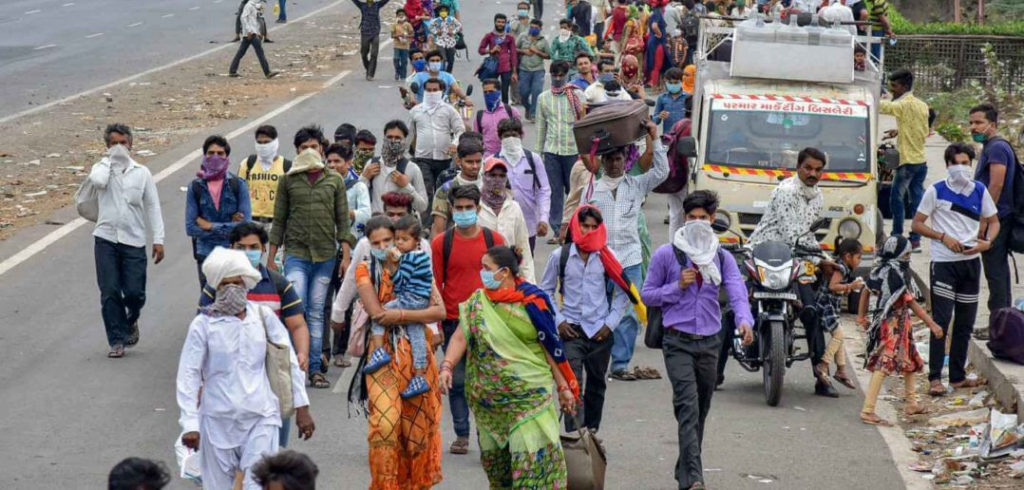The Importance of Migrant Labour

The media never focuses on migrant workers but for once, these men and women who come from the poorest segment of the society, are grabbing national headlines. Here are facts about the ignored people that India cannot do without
‘Bassul oddu, bandlu oddu, ayya saaru // idisi pedite, nadisi nenu pota saaru’
‘Peda rogam kante – pedda rogam unda… ayinavalla kante – pedda anda unda?
Roughly translated:
‘We do not want buses or trains, just let me go Sir, I will walk on my own.’
‘Can there be a bigger disease than poverty, Can there be anyone better than loved ones?’
The above lines from a Telugu song, sung by Aadesh Ravi, a sound engineer, about the plight of migrant workers, made everyone stand up and take notice. Heart wrenching lyrics, without background music, tugged at the hearts of one and all. The lakhs of migrant labourers, make upto 65% of the work force in the informal sector. According to the 2017-18 Periodic Labour Force Survey, these people were literally on the roads, during the lockdown.
According to the 2011 census, migrant workers constitute 17 crore in cities and form the backbone for the economy. Not just that, they also provide a link for the rural economy. The man works in the city while, the wife and children take care of the little patch of land back home. In some cases, for instance – brick kiln workers, whole families from Odisha, travel to Telangana, Andhra Pradesh and Tamil Nadu in September, to work till March in sordid conditions.
You name it- real estate, furniture industry; steel and metallic, foundry the migrant worker is visible. Majority of them are from UP, Bihar, Jharkhand and Chhattisgarh.
Of all interstate migrants in India, 23% are from Uttar Pradesh and 14% from Bihar, according to data from Census 2011. The rural unemployment rate in these two states – 7% in Bihar and 6% in UP – is higher than the Indian average of 5.8%, according to the Periodic Labour Force Survey.
Uttar Pradesh makes up about 15% of India’s total rural unemployment and Bihar 10%. There are 53.8 crore unorganized workers in India, out of the current population of 138 crore. The wheels of the economy could come to a grinding halt if the migrant workers decide not to return to the cities. Cities need them; they do not need the city.
Of late, the statistic- 6.5 crore enterprises that employ over 90% of the labour force is doing the rounds. What could be the state of affairs if majority of the labour force deny coming to cities to live in small rooms packed like sardines? The consequences could be unimaginable.
‘Desham emo goppa daye; maa bathukul emo sinnavaaye – sang Aadesh Ravi, meaning: ‘The country is great but our lives not sums up in many ways the value we give them.’

Here are some facts about this force that keeps India ticking:
37% of India’s poor live in Uttar Pradesh and Bihar, according to 2011-12 data from the Planning Commission
35% of the rural population lives below the poverty line in Odisha, 35.7% in Madhya Pradesh, and 22% in West Bengal, Planning Commission data show
Majority work in ‘unorganised’ category in units registered under labour and factory laws
Four out of five people, below the poverty line, move all around for work
There are 53.8 crore unorganised workers in India, out of the current population of 138 crore
Those who employ more than five migrant labourers, are duty bound to provide proper wages, housing, medical facilities, pass-books, displacement allowance and anything else that the government of dreamers could cobble together. It is only on paper.
